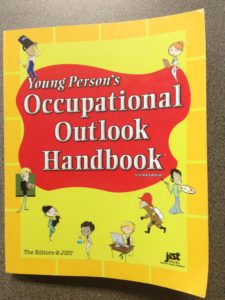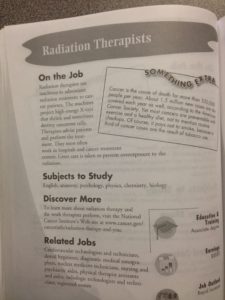Close reading can be used to tackle texts across all disciplines – even career counseling! Andrea is a school counselor who attended a workshop I hosted on close reading. By the end, a light had gone off for her in how to address a tricky text she’d been using to teach students about different careers – Young Person’s Occupational Outlook Handbook (GIST, 2010). See her celebration email below.


Hi Sunday,
I just wanted to share the results of the close reading that my students did using the Occupational Outlook Handbook in Career Academy this week. First off, I used to teach this lesson by explaining what I was looking for (job responsibilities, tasks, duties, “what I would see you doing while on the job”). You name it, I tried to use every synonym to describe in detail what I was looking for. Next, I would project a completed form on the Promethean board, and I would verbally model the type of answer I was looking for. Lastly, I would give students a checklist that they used to ensure they had answered each section accurately and in detail. It usually took a good 15 minutes to introduce this, not to mention the time it took for them to check their work with the checklist. THis time I jumped right in with close reading. I introduced the essential question. We read the short passage out loud and then went through it sentence by sentence to determine if the information answered the essential question, underlining if it did. I gave them their books and they went to work. This took less than 10 minutes. I was able to find a classroom set of completed sheets from last year and did a quick data analysis. The percentage of “correct” responses was 70%. Today I checked student responses after using close reading. It was 96%.
It worked and it took less time! Love it!!!
Thanks for sharing your expertise,
a.
My Take-Away from Andrea
With a clear purpose for reading and then a “close reading” approach – students can tackle difficult texts. The difference between Andrea’s lessons was a clear purpose for reading (an essential question from their unit of study) – “What would I see you doing while on the job?” and then close reading in pursuit of answering that question.
I’m frequently asked about sources of good informational text for close reading. For a long time, we have picked texts because they lend themselves to teaching particular strategies. But most content area texts are not written to be read using a particular strategy. Students can only tackle these texts by having a clear purpose for reading (frequently a “text-dependent” higher-level thinking question) and using a repertoire of strategies in pursuit of this purpose for reading.
I’m not taking for granted the need to model close reading and gradually release as well as other instructional methods for teaching students to make sense of complex texts. Just been thinking about the “texts” we choose. Some are always better than others, but with a clear purpose, most can be tackled.
